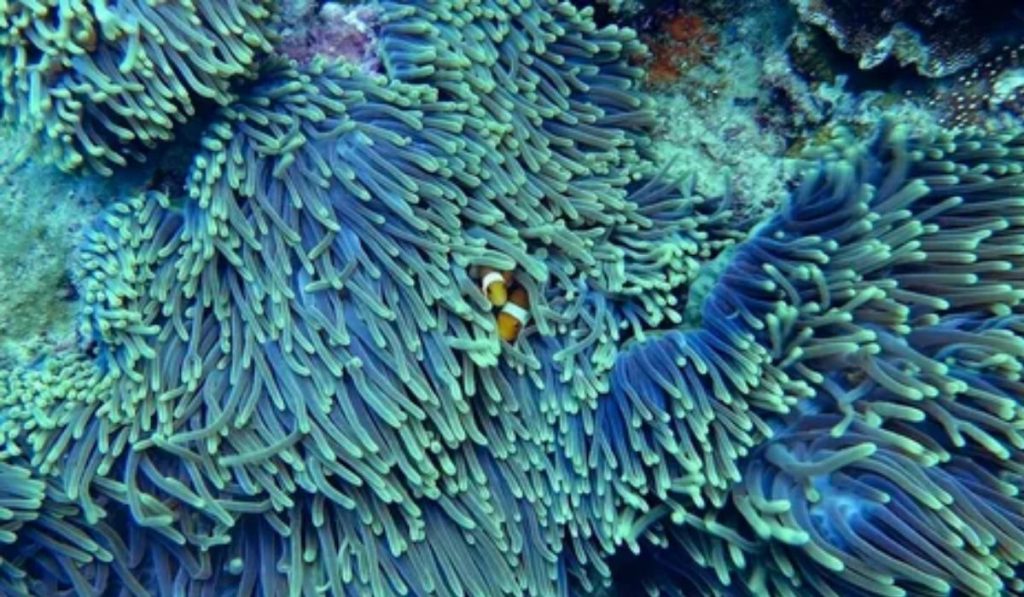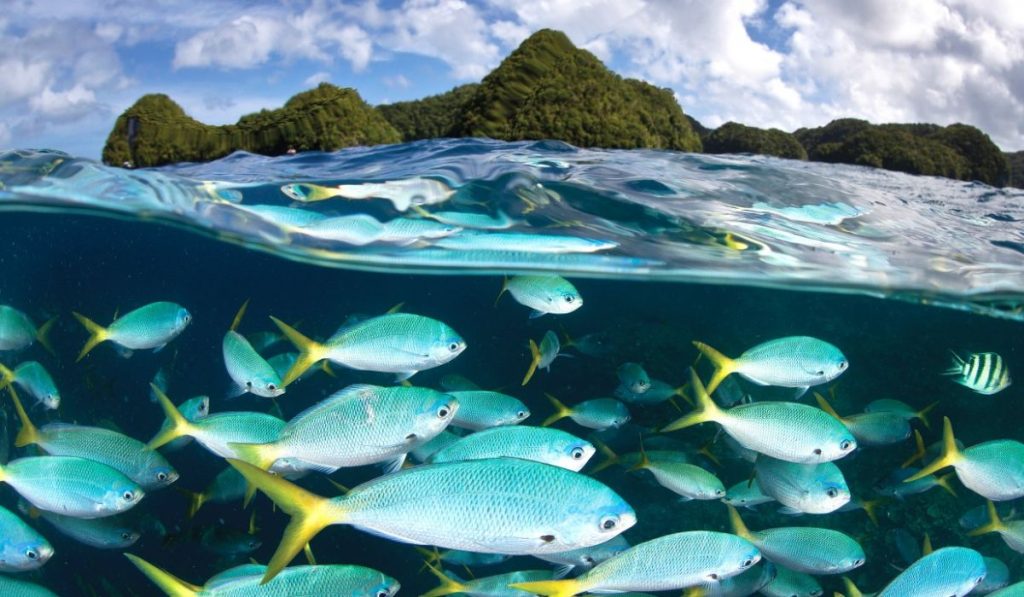The ocean is full of amazing life. Fish swim in big groups called schools. Colorful coral reefs are home to many sea creatures. Whales and dolphins breathe air but live in the water. Sharks are powerful hunters that help keep the ocean balanced.
Deep in the ocean, it’s very dark. Strange fish with lights on their bodies live there. Giant squid with long arms hunt in the depths. Underwater volcanoes create heat and new land. The ocean floor has mountains and valleys just like on land.
History and Overview of Earth’s Oceans
Earth has five main oceans. They are the Pacific, Atlantic, Indian, Southern, and Arctic. The Pacific is the biggest and deepest. Oceans cover most of our planet’s surface.
Oceans formed long ago when Earth was young. Rain filled the lowest parts of the land with water. This took millions of years. The oceans are home to many plants and animals.
People have used oceans for a very long time. Ancient sailors crossed seas to trade and explore. Oceans give us food and ways to travel. Many people enjoy swimming and sailing.
Today, we know more about oceans than ever before. Scientists study sea life and the ocean floor. Oceans face problems like pollution and overfishing. Taking care of our oceans is very important. There is still much to learn about the deep sea.
The Physical Environment of Oceans
Ocean Depth
The ocean gets deeper as you go out from the shore. Near the coast, it’s shallow. This area is called the continental shelf. Then it slopes down steeply. The deepest parts are called trenches. Some trenches are over 11 kilometers deep! Most of the ocean is very deep and dark.
Ocean Temperature
The ocean is warmer at the top and colder at the bottom. Sunlight warms the surface water. Deep water stays cold all the time. In some places, the change from warm to cold is sudden. This area is called the thermocline. Ocean currents can move warm and cold water around.
Ocean Pressure
As you go deeper in the ocean, the pressure increases. This is because of all the water above pushing down. At the surface, pressure is normal. But in the deepest parts, it’s very high. Animals that live deep in the ocean have special bodies to handle this pressure.
Ocean Salinity
Salinity means how salty the water is. Oceans are salty because of dissolved minerals. Some parts of the ocean are saltier than others. This can change how water moves and how dense it is. Very salty water is heavier and sinks. Less salty water floats on top.
Ocean Currents
Currents are like rivers in the ocean. They move water around the world. Some are caused by wind. Others are caused by temperature and salt differences. Currents affect climate and sea life. They can be warm or cold. Some are at the surface, others are deep underwater.
Technological Advancements In Underwater Exploration

In the past, exploring the ocean was very hard. Divers could only go to shallow depths. They couldn’t stay underwater for long. Now, we have special suits and submarines. These let people go much deeper and stay longer underwater.
We also use robots to explore the ocean. Some are controlled by people on ships. Others can work on their own. These robots have lights and cameras. They can take pictures and videos of sea life. Some can even collect samples from the ocean floor.
New technology helps us map the ocean better. We use sound waves to see the shape of the sea floor. Satellites can measure the height of the ocean surface. Scientists use computers to study all this information. This helps us learn about ocean currents and sea life. It also helps us find sunken ships and underwater mountains.
The Role of Oceans in Global Ecosystems
Oceans are very important for life on Earth. They cover most of our planet. Oceans make up half of the oxygen we breathe. Tiny plants in the water do this. These plants also take in a lot of carbon dioxide. This helps control Earth’s temperature.
Many animals live in the oceans. There are fish, whales, and tiny creatures we can’t see. They all depend on each other for food. Some land animals, like seabirds, also rely on the ocean for food. When one part of this system changes, it affects everything else.
Oceans also affect the weather and climate. They store heat from the sun. Ocean currents move this heat around the world. This helps make some places warmer or cooler. Oceans also create rain. Water from the sea turns into clouds. These clouds then rain over land, giving water to plants and animals.
Human Impact On The Ocean
People affect the ocean in many ways. We take a lot of fish from the sea. Sometimes we take too many. This can make it hard for fish populations to grow back. We also catch animals we don’t mean to, like turtles and dolphins.
Our trash often ends up in the ocean. Plastic is a big problem. It can harm sea animals. They might eat it or get tangled in it. Oil spills from ships also pollute the water. This can kill fish and birds.
Factories and farms send chemicals into rivers. These chemicals end up in the ocean. They can make the water unhealthy for sea life. Some areas have too many nutrients. This causes too much algae to grow. It uses up oxygen in the water.
Climate change is warming the oceans. This makes it hard for some sea animals to live. Warmer water also melts ice at the poles. This raises sea levels. It can flood coastal areas. The extra carbon dioxide in the air makes the ocean more acidic. This hurts animals with shells.
The Importance of Coral Reefs

Coral reefs are special places in the ocean. They are made of tiny animals called coral. These animals build hard skeletons that form reefs. Reefs are like underwater cities. They provide homes for many fish and other sea creatures. Coral reefs are very colorful and beautiful.
Coral reefs are important for many reasons. They protect coastlines from big waves and storms. This helps prevent erosion of beaches. Reefs also provide food for millions of people. Many fish that people eat live in coral reefs. Some medicines come from animals found on reefs.
Sadly, coral reefs are in danger. Pollution and warming oceans hurt coral. When oceans get too warm, coral can die. This is called coral bleaching. Overfishing also harms reefs. It’s important to protect coral reefs. They are valuable for nature and for people. Many countries are working to save their coral reefs.
The Cultural Significance of Oceans
Oceans have been important to people for a long time. Many cultures have stories about the sea. These stories often include sea gods or magical creatures. Some people see the ocean as a powerful force of nature. Others view it as a source of life and food. Coastal communities often have special traditions related to the sea.
The ocean has inspired many forms of art. Painters create beautiful pictures of waves and beaches. Writers tell stories about sea adventures. Musicians make songs about the ocean’s sound and power. Many people find the sea calming and peaceful. They go to the beach to relax and enjoy nature.
Oceans have also shaped human history. People used ships to explore new lands. This led to trade between different parts of the world. Fishing has been a key job in many coastal towns for centuries. Today, many people still work on the sea. They are fishers, sailors, or scientists. The ocean continues to be an important part of human culture and life.
The Future Of The Ocean
The future of the ocean is uncertain. Climate change is making the water warmer. This affects sea life and weather patterns. Plastic pollution is a growing problem. It harms animals and pollutes beaches. Overfishing is reducing the number of fish. Some species might disappear if we don’t change our ways. Scientists are working to find solutions to these problems.
There is hope for the ocean’s future. Many countries are creating protected areas in the sea. These are like underwater parks where fishing is not allowed. People are also developing new ways to clean up ocean pollution. Renewable energy from the ocean, like wave power, could help reduce climate change. Education is important too. When people learn about the ocean, they often want to help protect it. The choices we make now will shape the ocean’s future.
Frequently Asked Questions :
What is the deepest part of the ocean?
The Mariana Trench, reached nearly 11,000 meters (36,000 feet) deep.
How do fish breathe underwater?
Through gills, which extract oxygen from water as it passes over them.
What is bioluminescence?
The ability of some sea creatures to produce their own light.
How do coral reefs form?
Tiny animals called coral polyps build calcium carbonate structures over time.
What is the biggest animal in the ocean?
The blue whale, which can grow up to 30 meters (100 feet) long.
Conclusion :
The ocean is full of amazing life. From tiny plankton to huge whales, there’s so much to learn. Deep-sea creatures have strange ways to survive in the dark. Coral reefs are home to colorful fish and other animals. Exploring the ocean helps us understand and protect this hidden world.







